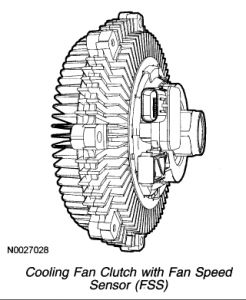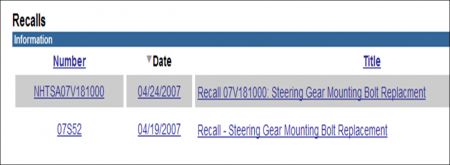Hello -
If I may..... What was wrong with the radiator for them to replace it?
Depending on your answer above.....I may relook....... But for now.
Most vehicles have either a centrifugal clutch type fan or an electric fan. You, the fan is both and has fluid in it also.........
You may have not noticed it before because it wasn't cooling correctly due to the radiator.
In radiator removal they do remove the fan. So there may have been loose connections before etc.
Many things send signals to your PCM that adjust your fan speed..... Plus your fan is spinning all the time anyway.........
I attached info on the fan control for your review to show you.
FAN CONTROL
The PCM monitors certain parameters (such as engine coolant temperature, vehicle speed, A/C on/off status, A/C pressure) to determine engine cooling fan needs.
Also I attached info on your cooling fan clutch....... As you will see there again, many things control that, oil temp, transmission temp.........
The cooling fan clutch is an electrically actuated viscous clutch that consists of 3 main elements:
"Â a working chamber
"Â a reservoir chamber
"Â a cooling fan clutch actuator valve and a fan speed sensor (FSS)
The cooling fan clutch actuator valve controls the fluid flow from the reservoir into the working chamber. Once viscous fluid is in the working chamber, shearing of the fluid results in fan rotation. The cooling fan clutch actuator valve is activated with a pulse width modulated (PWM) output signal from the PCM. By opening and closing the fluid port valve, the PCM can control the cooling fan clutch speed. The cooling fan clutch speed is measured by a Hall-effect sensor and is monitored by the PCM during closed loop operation.
The PCM optimizes fan speed based on engine coolant temperature (ECT), engine oil temperature (EOT), transmission fluid temperature (TFT), intake air temperature (IAT), or air conditioning requirements. When an increased demand for fan speed is requested for vehicle cooling, the PCM monitors the fan speed through the Hall-effect sensor. If a fan speed increase is required, the PCM outputs the PWM signal to the fluid port, providing the required fan speed increase.
To me since so many things are controlling the fan the engine temp may be okay, but like you said, an incline or acceleration....... There is an increase in fluid movement as you see... Oil and transmission temp may begin to rise and it kicks up to ensure it remains cool...
I believe to me... It is working as it should. To give yourself a better piece of mind...I have in the past had the service department put on the check out sheet that it is normal for such and such to work this way.
Example, 1995 Impala SS..... It runs very close to red line before the second cooling fan comes on. That made me nervous. When you read the spec on the fans etc, that is what it is suppose to do since the engine runs better at a higher temp....... But they don't want it to overheat either. So they put all that info on the receipt for me.
Let me know about the radiator..... But again.....I believe it is working for now... As it should.
Thursday, August 8th, 2019 AT 6:46 PM
(Merged)


